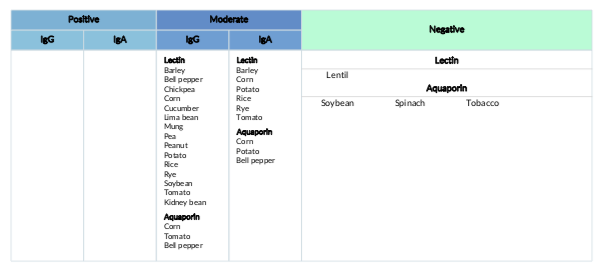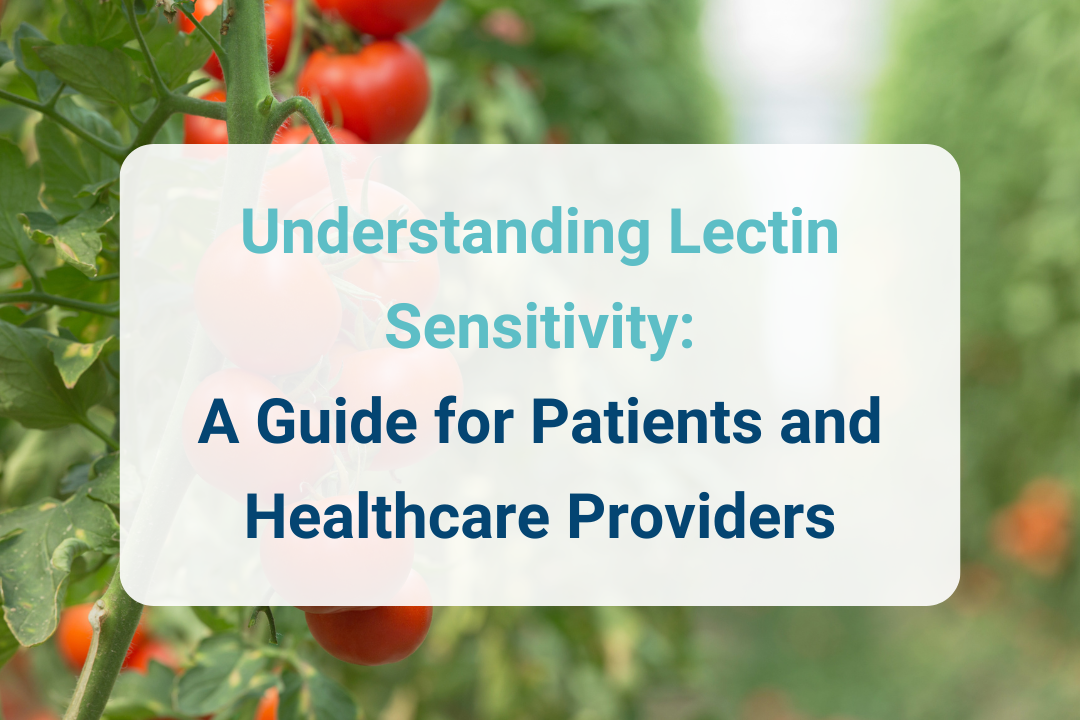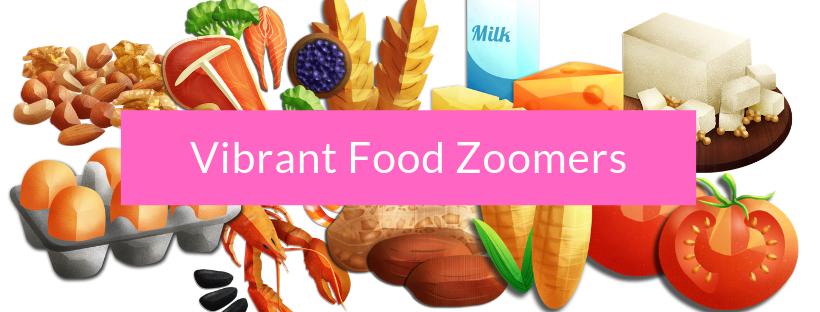How Do You Know If You Are Sensitive to Lectins?
LECTINS and AQUAPORINS
Lectins are a large class of sugar-binding proteins that can be found in all forms of life. In plants, lectins are part of the natural defense against microorganisms, pests, and insects. Many members of the lectin protein family can agglutinate (clump together) and become problematic for human health.
Lectins have been thought to contribute to the development of diseases such as celiac disease, autoimmune diseases, rheumatoid arthritis, obesity, cardiovascular disease, and type 2 diabetes through mechanisms involving translocation across the intestinal barrier and activation of the adaptive immune system. [1,2] The most common high-lectin foods include: grains, legumes, and nightshades.
Aquaporins, or “water channels”, are membrane proteins that form pores to facilitate water transport between cells. Human aquaporins show similarity to aquaporins from food sources (e.g., spinach, soy, corn, tomato, etc.) which could trigger the production of antibodies, which might increase risk for neuro-autoimmune disorders. [3]
What are Lectin and Aquaporin Sensitivities?
Lectin and aquaporin sensitivities are your body’s delayed immune response that can occur hours to days after these foods are consumed.
Symptoms associated with lectin and aquaporin food sensitivities include:
- Bloating, gas, and abdominal cramps
- Painful and swollen joints
- Fatigue and tiredness
- Skin rashes
- Hormonal fluctuations
- Nausea
- Allergy like symptoms
- Neurological symptoms
Risk factors that may place you at higher risk for lectin or aquaporin sensitivities include:
- Frequent use of antibiotics
- Following a vegan/vegetarian diet
- Leaky gut syndrome
- Family history of autoimmune disorders
- Mental health problems
- Imbalances in the gut/ immune system
- Following a vegan/vegetarian diet high in grains and/or legumes
- Those with known intestinal permeability, such as detected on the Vibrant Wheat Zoomer
- History of rheumatoid arthritis (painful and swollen joints)
- Experiencing fatigue and tiredness
- Psychological symptoms or disorders (e.g., depression)
- Neurological autoimmunity or degenerative symptoms of undefined origin
- Presence of skin rashes
- Nausea (especially during or after meals)
Why Test for Lectin & Aquaporin Sensitivities?
Major harmful effects of dietary lectins may include:
- microbial imbalances
- damage to the gut lining
- provocation of the immune system
Clinical Connections and Testing Options
What Does the Vibrant Lectin Zoomer Include?
The Lectin Zoomer is a unique peptide-level test which detects IgA and IgG antibodies to lectins and aquaporins in the most comprehensive panel of foods available on the market.
Following is an example of a Food Sensitivity Test (protein level) and a Lectin/Aquaporin Zoomer panel (peptide level). Several foods on the Food Sensitivity test are negative but show up as reactive for IgG and IgA on the Lectin/Aquaporin Zoomer. This is a great example of why standard food sensitivity tests may not detect sensitivity to lectin components of foods.
The important to take away from this is that standard food sensitivity tests are whole protein or extract sensitivity tests, whereas the Vibrant Food Zoomers are peptide-level tests, which means that we are detecting sensitivity to the thousands of individual peptides in each food tested, in order to avoid cross-reactivity, the possibility of low stomach acid or pancreatic enzymes skewing results, or the role that intestinal permeability plays in whole proteins translocating across the intestinal barrier.


References
- Pan et al (2013). Effects of Soybean Agglutinin on Mechanical Barrier Function and Tight Junction Protein Expression in Intestinal Epithelial Cells from Piglets. Int. J. Mol. Sci. 2013, 14, 21689-21704; doi:10.3390/ijms141121689
- Cordain et al (2000). Modulation of immune function by dietary lectins in rheumatoid arthritis. British Journal of Nutrition (2000), 83, 207–217
- Fukuda and Badaut (2012). Aquaporin 4: a player in cerebral edema and neuroinflammation. Journal of Neuroinflammation, 9:279. https://jneuroinflammation.biomedcentral.com/articles/10.1186/1742-2094-9-279



